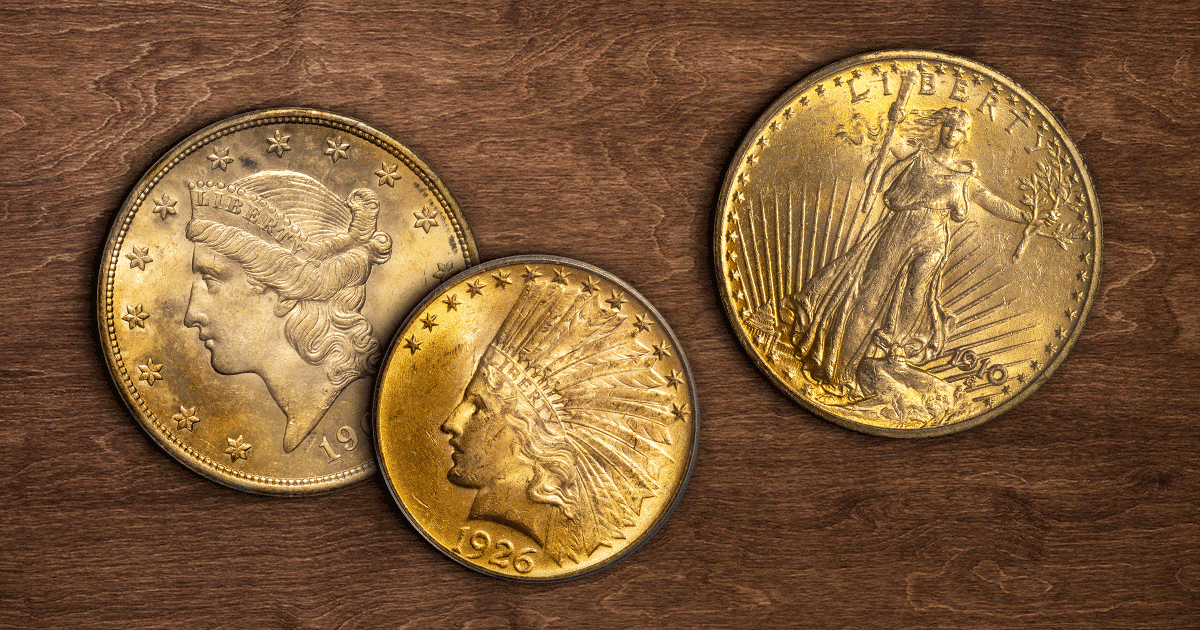
Whether you are preparing to set off on your first numismatic adventure or are adding another facet to your collection, pre-1933 gold coins combine historic value with timeless designs. Understanding the context and significance of pre-1933 gold coins before you begin investing will make the journey thrilling- and help guide you toward a goal.
Steps to Take for Investing in Pre-1933 Gold Coins
Educate Yourself About Pre-1933 Gold Coins
One of the first steps for beginning a collection of pre-1933 gold coins is taking inventory of the coin types and becoming familiar with the denominations and designs.
This should also include learning the story and context around Executive Order 6102 and the Gold Reserve Act of 1934. This act and order, supplemented by a Congressional vote, ended the production of gold coins in the United States and most private gold ownership.
Finding the right numismatic books will help by putting the information you need in hand, as well as providing reference down the line when there is a question of mintage or years of issue.
For collectors who want to take their research a step further, the Vintage Gold Coin Calculator offers an easy way to estimate the melt value of pre-1933 U.S. gold coins based on their gold content. By entering the type and quantity of coins you own, you can see their current intrinsic gold value at today’s spot price. While this tool does not account for the rarity, condition, or collector demand that influence numismatic premiums, it provides a helpful perspective on the metal value behind your historic coins as you begin building or expanding your collection.
Set a Goal for Your Investment
Determine which coins you want to add to your collection first.
Which coin designs are the most compelling to you? These coins are an investment and one that you may want to keep for some time as their values appreciate. Since they may be in your portfolio for years to come, it is best to collect something you admire.
Is your goal to amass as much pre-1933 gold coinage as possible or to find all the key date issues? Whether your aim is assembling a set of quarter eagles from each year or to find one of each design, setting a goal will help guide your developing collection.
Some collectors may want to find one pre-1933 gold coin of each type: $1, $2.50 quarter eagles, $5 half eagles, $10 eagles, and $20 double eagles. Setting a goal before you begin will help guide your investment strategy and keep your collection on track.
Set a Budget
How much do you want to devote to collecting pre-1933 gold? Set a monthly budget or frequency of purchase, and like tactics used in dollar-cost-averaging, stick to that budget and frequency. These will help guide your purchases and timeline.
Determining a budget will be different for every investor. Collecting elusive gold coins is a process that takes time, and it may take years to find the coins that you want. Setting and sticking with a budget will make it easier to achieve the goals you set while minimizing unforeseen expenses.
Start Investing, but Start Small
Start shopping for the more commonly available coins that match your focus coin type. Shopping for coins with higher mintages will translate to coins with lower premiums before moving on to key dates and other rarities. This will provide you with knowledge and experience about collecting pre 1933 gold coins while minimizing up front risks associated with purchasing rare and elusive coins.
What Makes Pre 1933 Gold Coins Special?
Pre-1933 gold coins were produced when the U.S. dollar was still backed by gold. Many Americans were hoarding gold coins during the Great Depression fearful of further economic instability. This contributed to the deflation of the U.S. economy and exacerbated the economic woes of the time.
The Great Depression left a severe impact on the U.S. economy, marred by bank failures widespread unemployment. President Franklin Delano Roosevelt implemented Executive Order 6102 on April 5, 1933, in hopes of restoring confidence in the dollar. The order nationalized the gold supply and, along with an act of Congress in June of that year, ended private ownership of gold until December 31, 1974.




